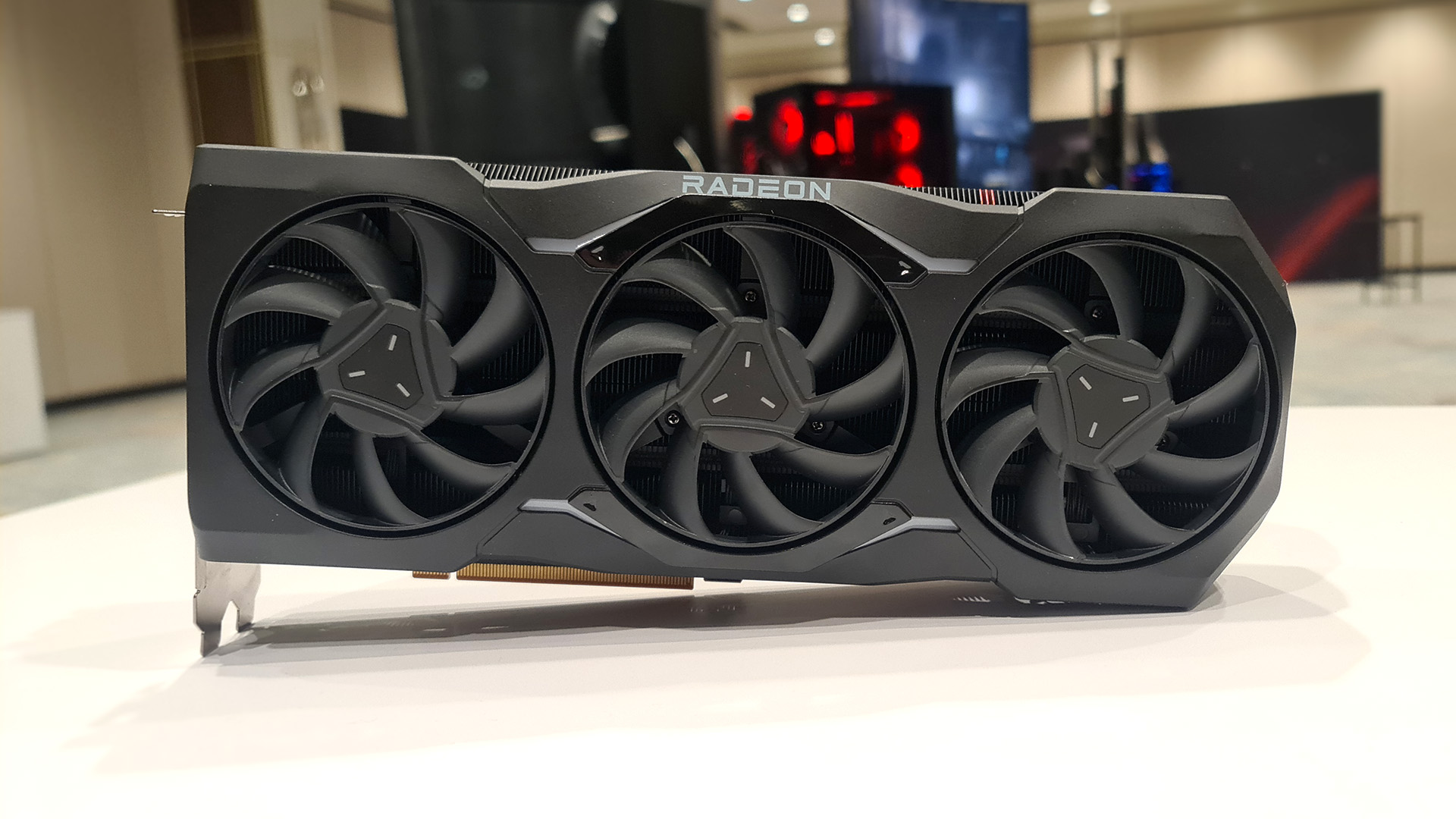You really have to feel for AMD’s graphics engineers. Every time it looks like they’re catching up with Nvidia—boom!—Team Green rolls out some new technowizardry and it’s back to playing catch up. And if market analysis and Steam survey data is anything to go by, what effort AMD does put in is for nought. Nvidia is utterly dominant.
In fact, the whole situation is becoming so painful, I’m beginning to wonder how much longer AMD will bother. Now, to be absolutely clear, I’m not taking a view here on the actual merits of AMD versus Nvidia graphics hardware. I’m not saying DLSS is da bomb, that Frame Gen is the greatest thing ever or that you’re nobody if your GPU doesn’t support Ray Reconstruction.
But what I am saying is that Nvidia keeps on rolling out new technologies that AMD feels obliged to match. And it must be exhausting. I mean, we waited nearly a year for AMD’s take on Frame Generation. And just as it managed to push something out the door, Nvidia was rolling out Ray Reconstruction, making AMD look like a wheezing steam-powered locomotive all over again.
It must be even more exhausting when all the effort translates into such terrible market share. I reported recently that AMD has regained market share from Nvidia in discrete gaming graphics. I also reported that it was a pretty tiny gain. Which it was. AMD is back up to 17.5% of the market for discrete desktop graphics card in the most recent quarter of 2023. But that’s still down on the 20% it had a year prior. And you have to go all the way back to 2005 to find a quarter where market analysts reckon AMD actually outsold Nvidia.
Moreover, it’s remarkable to note just how available AMD’s last-gen Radeon 6000 cards remain. You can still buy 6700 XTs, 6750 XTs, 6800s, 6800 XTs, and 6950 XTs. And prices on many of them continue to slide, implying that supplies remain plentiful.
Oh no, please don’t make me copy Nvidia’s Ray Reconstruction! (Image credit: Nvidia)
(Image credit: Nvidia)
Meanwhile, anything above an RTX 3060 Ti from Nvidia’s previous generation is long gone from retailers in terms of new stock. At the same time, AMD’s latest Radeon RX 7000 family is barely visible in Steam’s surveys of the hardware gamers use.
Heck, AMD has only just fleshed that family out. Presumably the new 7770 XT and 7800 XT were so late because AMD still had loads of old GPUs to shift. But whatever the reason, it all looks pretty half hearted, doesn’t it?
Then there are all those rumours that AMD has given up even trying to launch a high-performance variant of its next-gen RDNA 4 family of GPUs, likely to be branded Radeon RX 8000. Yes, that is merely a rumour. But it fits a certain narrative, for sure.
To be more precise, it’s narrative that says AMD’s graphics tech is primarily driven by and focussed on consoles. That’s why the RDNA 2 architecture in the Radeon RX 6000 series was so good. It was built for the Microsoft Xbox Series and Sony PlayStation 5 consoles, so it was AMD’s best effort. RDNA 3 in the Radeon RX 7000 family, on the other hand, is only for PC. So AMD’s motivation is very different.
Thus, the pressing question is how all this plays out in future. AMD keeps getting beaten badly by Nvidia in technological terms when it comes to pure PC graphics. Its market share has been pretty terrible for years despite all its best efforts. So why bother?
Rumour has it AMD isn’t bothering with high-end variants of RDNA 4. (Image credit: Future)
Why not focus on console and to a lesser extent APUs like those in the latest gaming handhelds which combine CPUs and GPUs in a single chip and with which Nvidia can’t compete, at least not when it comes to traditional x86-compatible PC platforms? Wouldn’t it be a blessed relief to not have to cook up some knee-jerk response to ray reconstruction, only to see gamers ignore it and keep buying Nvidia graphics cards anyway?
To be candid, personally I’d much prefer AMD stayed in the desktop graphics game. But as the saying goes, what I want butters no parsnips, glistening with ray-traced effects or otherwise.
Anyway, if you want predictions as to what will actually happen, here’s mine. RDNA 4 isn’t a console technology, so it will be half hearted, even more so than RDNA 3 in the RX 6000 family if the rumours are anything to go by. AMD will do RDNA 5 for desktop PCs. It’s very likely doing RDNA 5 (or Navi 5 if you prefer) for the next-gen consoles. So, it will be the fully funded effort and it will probably be pretty good.
(Image credit: Future)
Best CPU for gaming: The top chips from Intel and AMD
Best gaming motherboard: The right boards
Best graphics card: Your perfect pixel-pusher awaits
Best SSD for gaming: Get into the game ahead of the rest
Whether it sells or not, will be another matter. RDNA 5 almost certainly won’t appear until at least 2025. So that’s another couple of years of looking second rate in tech terms versus Nvidia and another couple of years of poor market share.
Whenever RDNA 5 does arrive in discrete PC graphics cards, if it doesn’t turn AMD’s fortunes around in that market, it will be AMD’s last. That’s right, I’m saying there’s a decent argument to be made that AMD doesn’t bother with discrete gaming GPUs any longer if RDNA 5 doesn’t turn sales around.
Of course, we won’t know if that’s the case until a few years after RDNA 5 rolls out. So, let’s convene here in, say, late 2027, and see how it all panned out.










